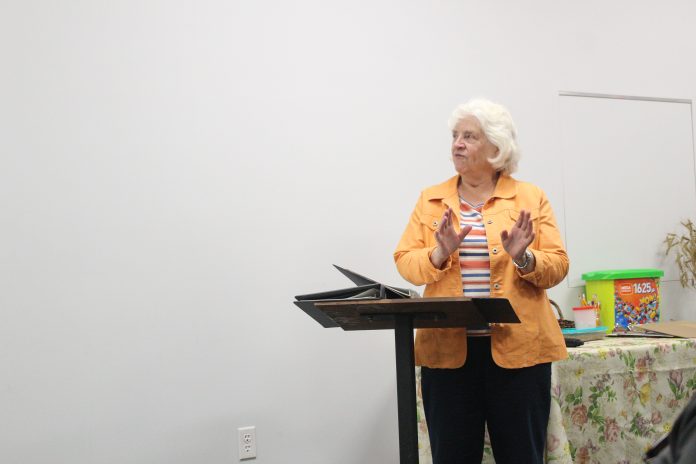
The first Coffee and Conversation for the new season on Sunday at the Prince Albert Historical Museum focused on how three settlements eventually became Prince Albert.
Connie Gerwing, a member of the Prince Albert Historical Society presented the story of how the Isbister Settlement, Nisbet Settlement and a place called Goschen eventually formed what became Prince Albert. Gerwing said she likes to share Prince Albert history with the people of Prince Albert.
“That’s one of the things we get to do here is just find a topic that interests us and research it,” she said. “When you research it, then I think it would be good to share it with the community.”
The Isbister Settlement was located near the current penitentiary, the Prince Albert Presbyterian Mission started by James Nisbet and Goschen, was the company town of the Hudson’s Bay Company in what is now the east flat area, were three separate settlements.
Gerwing said that the first person to settle in Prince Albert was James Isbister with his settlement near where the Saskatchewan Penitentiary is now. Isbister was recognized for his historical significance with a plaque in the area in 2022.
“A few stores and then St. Mary’s Church got built out that end, and Emmanuel College got built out there. All of this was in the 1870s, 80s and 90s, so that was a little community. It was a lot of Anglicans because the Anglican church was Saint Mary’s and Emmanuel College was Anglican,” Gerwing said.
Emmanuel College eventually moved to Saskatoon and became the College of Emmanuel and St. Chad.
In 1866 the Reverend James Nisbet began his Presbyterian Mission.
“He came here with the aim to settle and build a mission, so he started, and he built a school in a church,” Gerwing said.
In 1866, the Hudson Bay Company started a farm west of where Isbister was located. They then moved it to the area where the Hudson Bay Company reserve was located, east Sixth Avenue East by about a kilometer. The company had roughly 3,000 acres in there.
“In 1870 when Hudson Bay Company turned the land over to Canada and they got a bunch of land in return and they kept that as their settlement, (which) became Goschen. One thing you’ll note is there’s still a Goshen Place out at that end, but spelled differently,” Gerwing said.
The Goschen that joined Prince Albert was named after the Hudson Bay governor at the time in London.
“Goschen actually became quite a thriving community,” Gerwing said. “It was all the Hudson Bay Company. They had workers housing out there. A guy named Richard Deacon who was a Steamboat captain, built a hotel out there in the 1870s and they built a Methodist Church out there, so we had the Anglicans, the Presbyterians, and then the Methodist.”
The railroad eventually came through Goschen but when the Telegraph came it became an issue between Goschen and what was eventually Prince Albert.
“There was a big fight over where the main telegraph office was going to go, like fight as in fist fights and fight as in they put poles in to put the headquarters in Goschen and then some guys from the mission area came and pulled the poles out of the ground and put them in where they wanted to go,” Gerwing said.
“They went to court and people beat each other up and there was drinking and beating up and fighting for about 10 days and the courts had trouble handling it. It was a very small town and people, everybody knew everybody and everybody was mad.”
Eventually to settle the dispute the Federal Government put a telegraph office in Goschen and Prince Albert. The office in Goschen closed a few months afterwards and Prince Albert became the headquarters.
In a way, she said, the telegraph fight helped to unite Prince Albert.
Afterwards, residents began looking into making PA an incorporated town. The process began in 1879.
“It took them quite some time,” Gerwing said. “It didn’t happen till late 1885 that they actually did it, but their first town boundaries that they proposed didn’t include Goschen.”
Gerwing said Goschen residents did not like not being included in the new town boundaries. The area was formally called the East End, but informally, residents still called it Goshen.
There is evidence of the Isbister settlement and the Nisbet settlement but not much remains of Goschen.
“There’s really nothing left to mark what there was but that might change,” she said.
The research will also be part of an article in the Saskatchewan Folklore and History Society’s magazine called Folklore at a later date.
The next Coffee and Conversation is on Oct. 20 at 2 p.m. featuring Anne Hyriniuk on the history of La Ronge.
michael.oleksyn@paherald.sk.ca

